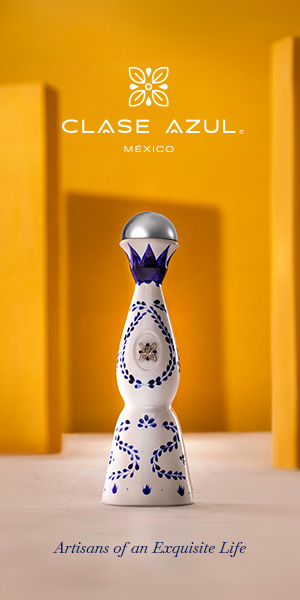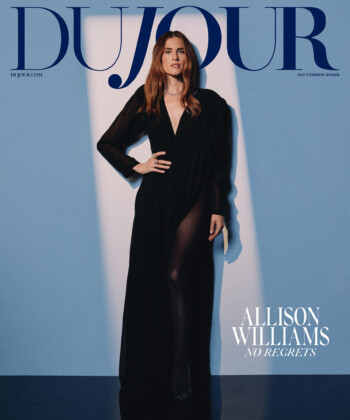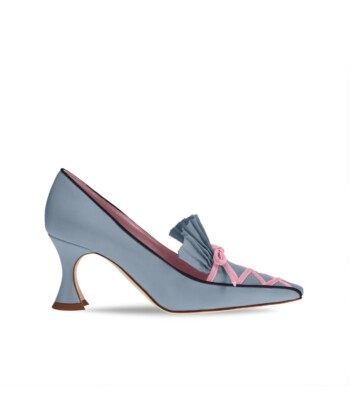Bagpipe players line the entrance to Mayfair’s Royal Institution of Great Britain, and lookie-loos crane their necks as a steady stream of fashion professionals enters the elegant edifice—it’s London Fashion Week, and Livia Firth, the eco-activist and wife of actor Colin, is hosting her “Green Carpet Challenge.” Inside, there is plenty of alcohol, a fake jungle and a line-up of stunning Stella McCartney dresses, all made of sustainable materials, some decorated with water-based inks. Even the tipsiest of guests can’t fail to notice not only that eco-correct clothing has become a serious industry goal but also that seriously chic people will come out and look at it, and it can be seriously gorgeous.
McCartney, who has always made this issue a top priority, may be a standard bearer, but she is hardly alone in thinking about the ethical implications of fashion these days—Tom Ford, Giorgio Armani and Valentino have also taken part in Firth’s “Green Challenge” in the past. In fact, so many illustrious companies are thinking about this that at least one fashion editor’s inbox (mine) is daily stuffed with claims of environmental awareness. Ball gowns proudly made from plastic soda bottles! Dazzling jewelry proclaiming that its dazzle relies strictly on recycled diamonds!
Still, I can’t help but wonder—when we talk about environmentally conscious luxury fashion, and we obviously are talking about it more and more, what do we really mean? Are we speaking about recycling and reinvention? And if so, does this mean that to be on the safe side, we have to ferret out the secret history of the fabrics we are wearing (no easy task) or confine ourselves to vintage clothing? (The latter might be okay if one loves wearing old clothes exclusively, but, of course, it might result in the ruination of the fashion industry as a whole.)
And does ethical fashion also mean paying closer attention to how animals used in clothing production are treated? Some activists feel we shouldn’t wear leather at all, a position that presents its own unique challenges. (More on this a little later.) But even if you feel confident that Ms. Cow met her end in a relatively humane way, what about the fact that, according to the site ethical.org, “Most leather produced in the U.S. and around the world is chrome-tanned. All wastes containing chromium are considered hazardous by the Environmental Protection Agency… Among the consequences of this noxious waste is the threat to human health from the highly elevated levels of lead, cyanide and formaldehyde in the groundwater near tanneries.”
Because I am not sure how to sort out all these harrowing facts, especially when I just want to go shopping without feeling like a greedy, soulless pig, I ring up Valerie Steele, the director of the Museum at the Fashion Institute of Technology. The morning I reach her, she has python on her mind. “I do care about all this a lot!” she exclaims. “I’m anxious about python, how it can be raised on farms—I don’t want us to be killing the last big python, and it can be difficult to find information.” She says she is happy that some Italian leather houses are paying more attention to natural dyes, but she is frankly worried about the worldwide jeans situation: “Denim is terrible for the environment.” Steele is a proponent of the buy-less-wear-more school of conservation: Today she is sporting Akris trousers she has had for years with a silk jacket, but “I don’t know how the silkworms were treated,” she admits.
If Steele is the poster child for moderation, my bosom buddy Mickey Boardman, the editorial director of Paper magazine, charts a radically different course. Not only will he not eat anything that has a face, he won’t wear it either. “It’s hard, since I am such a fashion victim,” he laments, relating the heartbreaking tale of the time he was told he could pick out anything he wanted from the Christian Louboutin boutique as a gift and had to skulk away empty-handed: Even the espadrilles had leather soles.
To see what life is like for this poor guy, I embark on a SoHo shopping trip in search of high-end accessories that are, as Mickey would put it, “cruelty-free.” At the Prada on Prince Street, a clerk tells me the shop can replace the calf zipper pull-tab on a nylon backpack, but alas there is no substitute for the leather triangle behind that metal Prada plaque. A Fendi iPad case at Kirna Zabête appears to be entirely skin-free, but the Givenchy nylon Bambi pouch—so perfect for Mickey!—is, on closer examination, sunk by its back panel. Vuitton comes to the rescue, with a keepall that has had its trademark hide trim replaced with a rubber-like material—not to court the vegan market, but to waterproof the thing for use on a yacht.
But it is at eco-conscious Stella McCartney’s store, no surprise, that I find the most seductive suggestions for the fully evolved fashionista: glamorous chain-handled totes, wood platform wedges and even—listen up, Valerie Steele!—satchels made of 100 percent fake python.










































